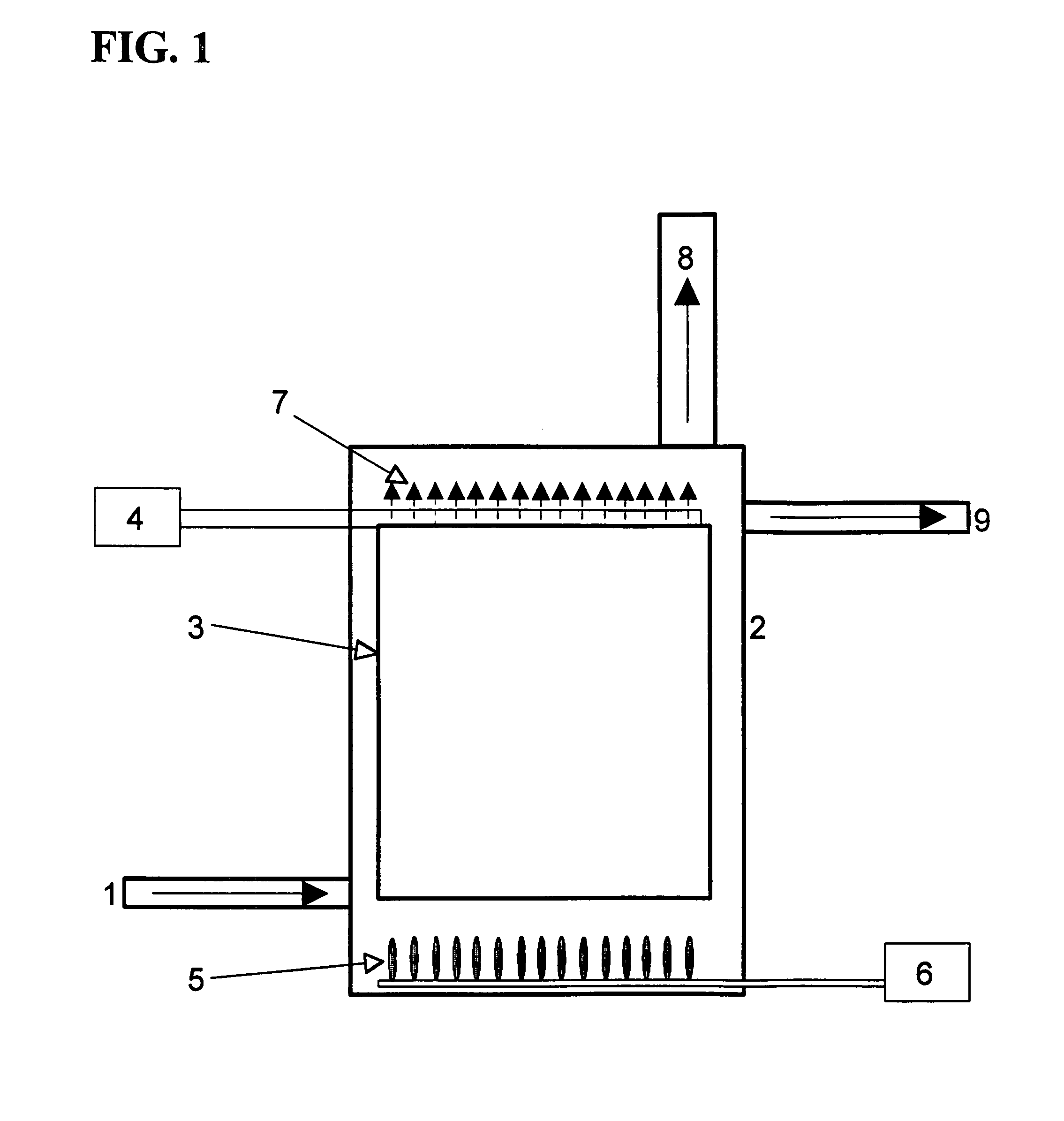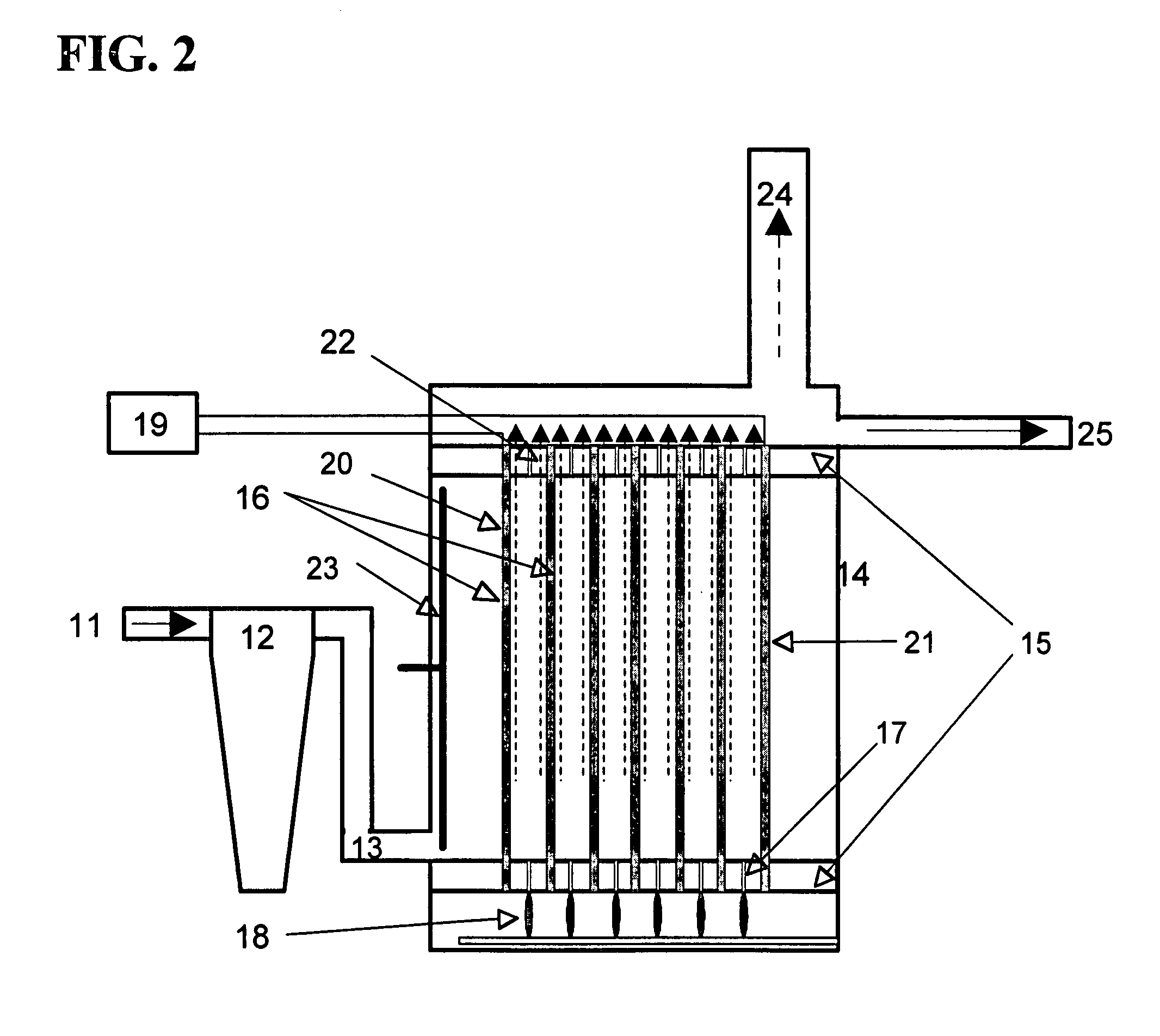Method and system for removal of ammonia from wastewater by electrolysis
a technology of ammonia removal and wastewater, applied in the field of wastewater and process water treatment, can solve problems such as algae and plant growth, and achieve the effect of reducing the ammonia level reaching the environmen
- Summary
- Abstract
- Description
- Claims
- Application Information
AI Technical Summary
Benefits of technology
Problems solved by technology
Method used
Image
Examples
first embodiment
[0025]In operation, electrical current flows uniformly through the water between the plates. This current heats the water and is a parasitic loss and has no beneficial action. It is therefore advantageous to operate with the electrode spacing as small as is mechanically possible. The spacing is typically limited by the flatness of the electrodes, particle content of the wastewater, and the operational safety margin desired for the system. The first embodiment uses, but is not limited to, a spacing of 3 millimeters (3 mm). Smaller electrode spacings permit lower operational voltages for the system. Voltage regulation provides no added performance to the system. During electrolytic cell operation, the pH of the water near the cathode increases to level>9. At or above a pH of 9, aqueous ammonium (NH4) is converted to gaseous ammonia (NH3).
[0026]Wastewater flows through the space between the plates. In this embodiment the water flows from the bottom of the electrodes to the top. Other w...
second embodiment
[0029]the system consists of one or more pairs of porous electrodes arranged in a substantially planar fashion. The effectiveness of this or other embodiments is not impacted by the use of other geometries such as cylindrical geometries. The porosity of the electrodes is needed in order to maintain a flow of wastewater through the cell. The electrodes are fabricated from corrosion resistant materials such as but not limited to titanium. Other coatings may be placed on the titanium. These coatings may consist of, but are not limited to, thin layers of such oxides as rhenium oxide, zirconium oxide, and rhodium oxide.
[0030]The embodiment uses, but is not limited to, electrodes whose width is 30 cm and whose length is 100 cm. This results in an electrode area of ˜3000 cm2. Electrode dimensions can range from a few cm to hundreds of cm and are limited only by the physical constraints of the application and the engineering required to hold the electrode spacing to adequate tolerances.
[003...
PUM
 Login to View More
Login to View More Abstract
Description
Claims
Application Information
 Login to View More
Login to View More - R&D
- Intellectual Property
- Life Sciences
- Materials
- Tech Scout
- Unparalleled Data Quality
- Higher Quality Content
- 60% Fewer Hallucinations
Browse by: Latest US Patents, China's latest patents, Technical Efficacy Thesaurus, Application Domain, Technology Topic, Popular Technical Reports.
© 2025 PatSnap. All rights reserved.Legal|Privacy policy|Modern Slavery Act Transparency Statement|Sitemap|About US| Contact US: help@patsnap.com



